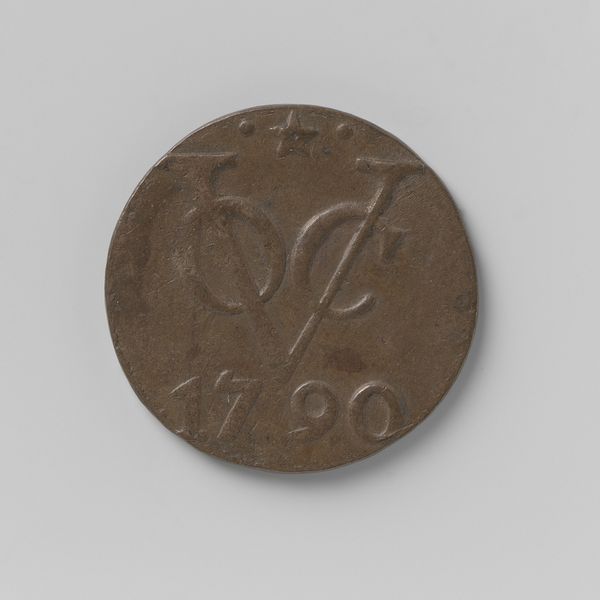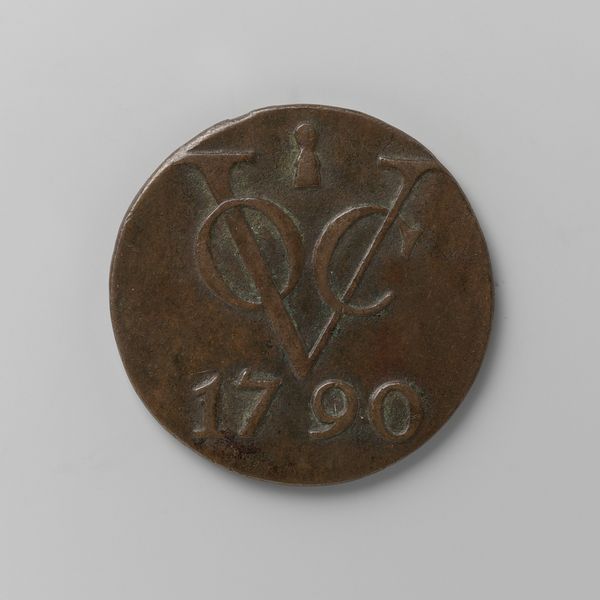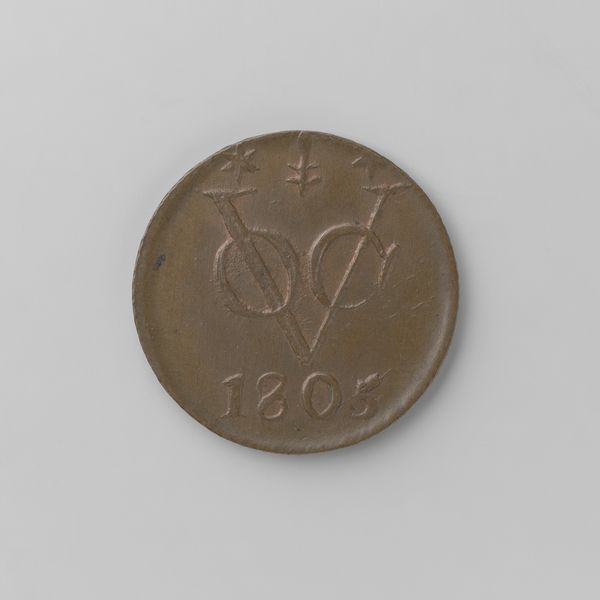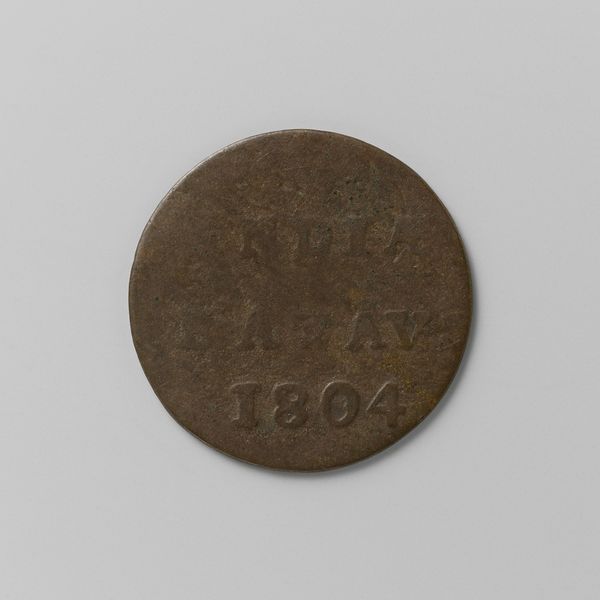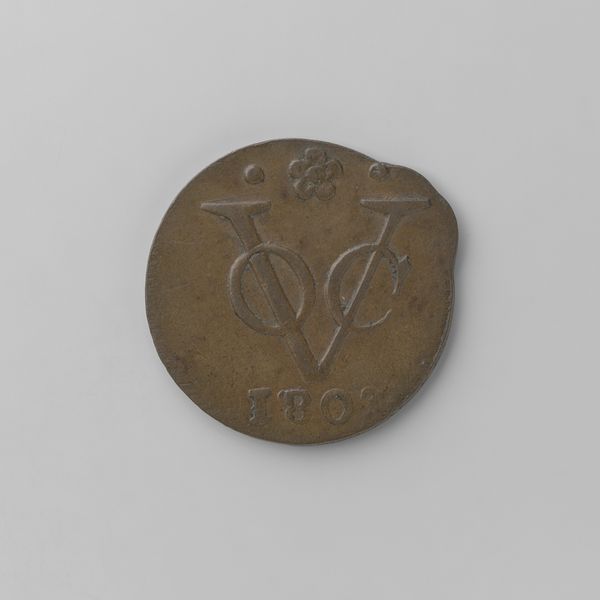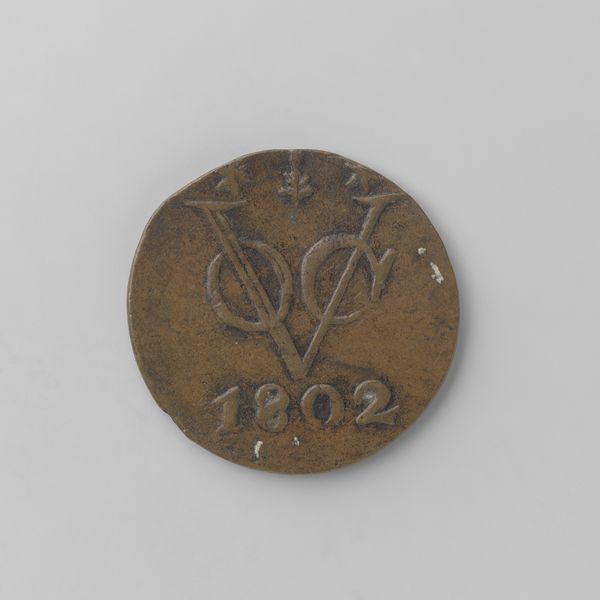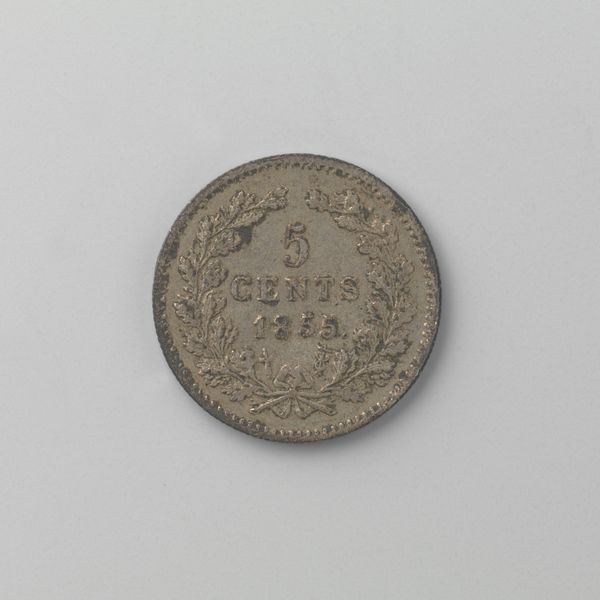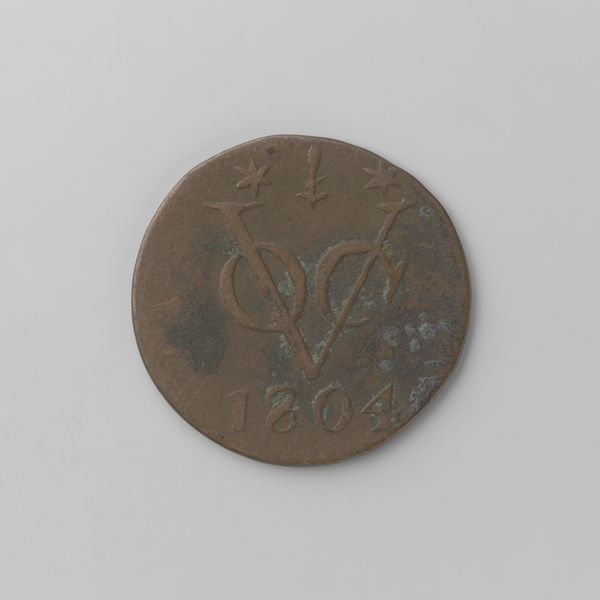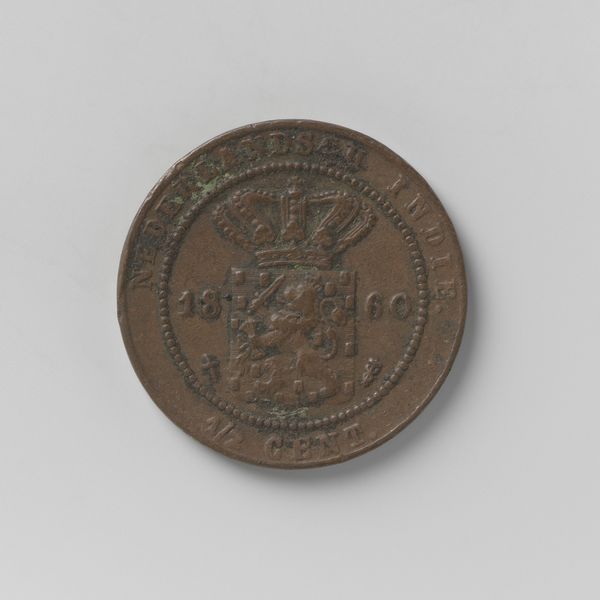
Dubbele duit op naam van de VOC en de stad Utrecht met jaartal 1790 1840 - 1843
0:00
0:00
print, metal
#
dutch-golden-age
# print
#
metal
#
geometric
#
islamic-art
Dimensions: diameter 2.6 cm, weight 6.63 gr
Copyright: Rijks Museum: Open Domain
This double duit, dating from 1790, was issued by the Dutch East India Company, or VOC, and the city of Utrecht. It’s made of copper, a relatively soft metal that would have been melted, cast into bars, and then rolled into sheets of consistent thickness. The blank coin would then have been placed between two dies, or engraved metal blocks, and struck with a hammer or press to transfer the image onto the surface. This particular coin bears the VOC logo, along with the Utrecht city mark. The striking of coins was a crucial element in the development of global trade, as it standardized value and facilitated exchange. But like all forms of money, this coin is far more than just a token. It’s a material embodiment of economic systems and power structures, reflecting not only the wealth of the VOC but also the labor practices and colonial ambitions that underpinned its success. Appreciating such historical context deepens our engagement with even the most seemingly humble objects.
Comments
No comments
Be the first to comment and join the conversation on the ultimate creative platform.
